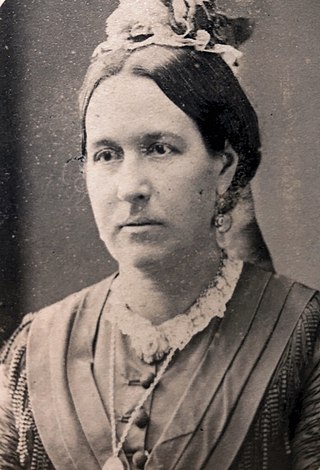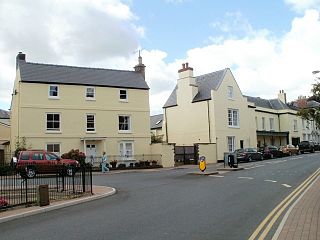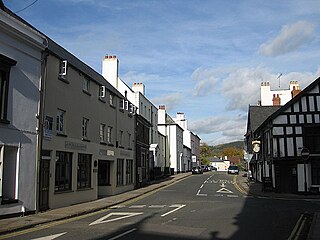
Haberdashers' Boys' School is a 4–18 boys public school in Elstree, Hertfordshire, England, and is a member of the Headmasters' and Headmistresses' Conference as well as the Rugby Group. The school was founded in 1690 by a Royal Charter granted to the Worshipful Company of Haberdashers to establish a hospital for 20 boarders with £32,000 from the legacy of Robert Aske. The school relocated in 1903 and currently occupies 104 acres of green belt countryside in Elstree. The house names in the preparatory and pre–preparatory schools represent the patron saints of the four countries of the United Kingdom – Scotland, Wales, England and Northern Ireland.

Monmouth School for Boys is a public school for boys in Monmouth, Wales. The school was founded in 1614 with a bequest from William Jones, a successful merchant and trader. The School is run as a trust, the William Jones's Schools Foundation, by the Worshipful Company of Haberdashers, one of the livery companies, and has close links to its sister school, Haberdashers' Monmouth School for Girls. In 2018, the Haberdashers renamed their group of schools in the town, the Monmouth Schools, and made corresponding changes to the names of the boys' and girls' schools.

Haberdashers' Monmouth School for Girls is an independent school in Monmouth, Wales. The school was established by the Worshipful Company of Haberdashers in 1892, and continues to enjoy their support.

Prior Park College is a mixed Catholic public school for both boarding and day pupils in Bath, south-west England. Its main building, Prior Park, stands on a hill overlooking the city and is a Grade I listed building. The adjoining 57-acre (23 ha) Prior Park Landscape Garden was donated by Prior Park to the National Trust.

West Monmouth School is a state-funded and non-selective secondary school in Pontypool, Torfaen, south Wales.
Monmouth Rowing Club is located on the banks of the River Wye in Monmouth, the county town of the historic county of Monmouthshire, Wales. The club is affiliated with the Welsh Amateur Rowing Association (WARA) and hosts several annually organised race events.

Chapel House, Hereford Road, Monmouth, Wales, is a Georgian townhouse, built in the early eighteenth century, described by the architectural historian John Newman, as "the best house in the entire street". The house was designated a Grade II* listed building on 27 June 1952. Chapel House is now a boarding house of Monmouth School.

Monmouth Poor Law Union was formed on 11 July 1836 in Monmouth, Wales

Vauxhall Fields, also known as Vauxhall Meadows, are water meadows to the northwest of Monmouth town centre, Wales. The River Monnow borders the meadows on two sides. The meadows have generally remained free of development. The area has been prone to flooding on many occasions over the years.

The Monmouth Alms Houses of Monmouth, Wales are funded by the charity established by the haberdasher William Jones before his death in 1615. That charity also established schools in Monmouth and a lectureship in London. The Haberdashers' Company served as trustee of the charity from 1613 until 2011, when the trusteeship was transferred to Bristol Charities. A second charity established through a separate bequest by Jones enabled the building of the Newland Alms Houses in the Forest of Dean. The original Monmouth Alms Houses were constructed in 1614; they were rebuilt in 1842 and 1961. The fourth version of the Monmouth Alms Houses was completed in 2013 and is named 'Cwrt William Jones Almshouses' and is owned and managed by Bristol Charities under the name of 'William Jones Almshouse Charity'. The original alms houses were located on what is now known as Almshouse Street. The most recent houses are located off St James' Square.

Mary Ellen Bagnall-Oakeley (1833–1904) was an English antiquarian, author, and painter known for her work in Bristol and south-east Wales. She was a governor of the Haberdashers' Monmouth School for Girls and the mother of nine children.

Whitecross Street is a historic street in the town centre of Monmouth, Monmouthshire, Wales. It was in existence by the 15th century, and appears as Whit crose on the 1610 map of the town by cartographer John Speed. It runs in an east-west direction, between Church Street and St James Square. It has been suggested that the street takes its name from a plague cross. Whitecross Street is lined with numerous listed buildings.

33 Whitecross Street is a grade II listed building in Monmouth, Wales in the area of St James Square. The property was the site of an archaeological excavation in 2009, which found evidence of Neolithic (prehistoric), Roman, and Medieval activity. The following year, archaeological excavation in the square discovered the first evidence of Mesolithic human settlement in Monmouth.

Kingsley House and Hendre House are a pair of 19th-century, semi-detached houses on the North Parade section of Monk Street in Monmouth, Monmouthshire, Wales. The grade II listed houses were designed by noted Monmouth architect and builder George Vaughan Maddox, who also designed at least two of the twenty-four blue plaque buildings on the Monmouth Heritage Trail, including the Market Hall and the Monmouth Methodist Church. Hendre House should be distinguished from The Hendre, the estate of the Rolls family.

St James Square is a historic square in the town centre of Monmouth, Monmouthshire, Wales. It is located at the eastern end of Whitecross Street, within the medieval town walls. The area features the Monmouth War Memorial and the controversial, historic Indian Bean Tree. In addition, in 2010, the square was the site of discovery of the first Mesolithic artefacts in Monmouth. St James Square is lined with numerous listed buildings. It is also home to the Monmouth Catalpa Tree.

St James Street is a historic street in the town centre of Monmouth, Monmouthshire, Wales. It appears as a segment of Whitecross Street on the 1610 map of the town by cartographer John Speed and is within the medieval town walls. On more recent maps, it extends from St James Square southwest to Almshouse Street. In 2010, the street was the site of discovery of Mesolithic era artefacts. St James Street is lined with numerous listed buildings.

St James House is a grade II listed building in Monmouth, Monmouthshire, Wales. It is in the historic St James Square neighbourhood, within the Medieval town walls. While the house currently has an attractive, 18th-century facade, it originated as a burgage tenement. In addition, behind the house, evidence of a kiln has been unearthed, with both Medieval and Post-medieval pottery. In 2010, archaeological excavation in the square revealed the first evidence of Mesolithic human settlement in Monmouth. Recent residents of St James House have included boarding students from Monmouth School.

Glendower Street is a historic street in the town centre of Monmouth, Monmouthshire, Wales. It extends to the southeast from the intersection of Agincourt Street and St John's Street, within the medieval town walls. Glendower Street is lined with numerous listed buildings, including one of the 24 blue plaque buildings on the Monmouth Heritage Trail.

St John's is a grade II listed building in the town centre of Monmouth, Wales. It is located in Glendower Street within the medieval town walls. The house is most remarkable for the rear of the property which features a Coalbrookdale verandah and formal walled garden that have been separately grade II listed with the Cadw/ICOMOS Register of Parks and Gardens of Special Historic Interest in Wales. The villa's garden is also registered with the Welsh Historic Gardens Trust.

Wye Bridge Ward was one of four wards in the town of Monmouth, Monmouthshire, Wales. Streets in the ward included St Mary's Street, Almshouse Street, St James Street, St James Square, Whitecross Street and Monk Street. The ward existed as a division of the town by the early seventeenth century, and continued into the twentieth century.
















